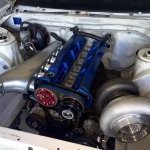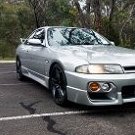Sport Compact Rule Changes
Announcements
-
Similar Content
-
Latest Posts
-
I have a friend who has used Chequered Tuning and CMS. Went to CMS when Chequered had a long wait time which is kind of the norm (for good reason). Was very happy - I'm pretty sure the very simple thing you're asking will be simple.
-
lol that caught up a year quickly! good to see you on the track again, hoping to do it myself one day
-
Nah he was mega organised, the sort of guy that put (almost) every tool back every day, it made trying to work out where things were up to possible. My shed needs a swedish death clean, I would have >20 part done jobs, its particularly hard to collect all required parts for a job ahead of time when you can't just pop into a shop and grab things
-
Yeah dust and squeal tend to go together, because it is the dust getting caught somewhere that causes the vibration that is the squeal...
-
Actually that's a good point, shouldn't you be in FNQ putting up a bridge for the Bruce Highway?
-





Recommended Posts
Create an account or sign in to comment
You need to be a member in order to leave a comment
Create an account
Sign up for a new account in our community. It's easy!
Register a new accountSign in
Already have an account? Sign in here.
Sign In Now